If you need to fill out a floral arrangement, nothing quite compares with the soft clouds of white flowers produced by plants in the Gypsophila genus, better known as “baby’s breath.”

Not only can these flowers fill in gaps in flower arrangements, but they can do the same thing in your garden.
In this guide, we will tell you all you need to know about growing baby’s breath, including growing conditions, planting instructions, and maintenance tips. Use the table of contents below to jump to the section you are looking for.
Jump to:
- What is Baby’s Breath?
- Baby’s Breath Basics
- Where Do Baby’s Breath Flowers Grow?
- Why Grow Baby’s Breath?
- Baby’s Breath Landscaping Ideas
- Recommended Baby’s Breath Varieties
- Where to Buy Baby’s Breath
- When Do Baby’s Breath Flowers Bloom?
- How Long Do Baby’s Breath Flowers Bloom?
- When to Plant Baby’s Breath
- Ideal Growing Conditions for Baby’s Breath
- How to Plant Baby’s Breath
- How to Care for Baby’s Breath
- How to Transplant Baby’s Breath
- Recommended Companion Plants for Baby’s Breath
- Frequently Asked Questions About Growing Baby’s Breath
What is Baby’s Breath?
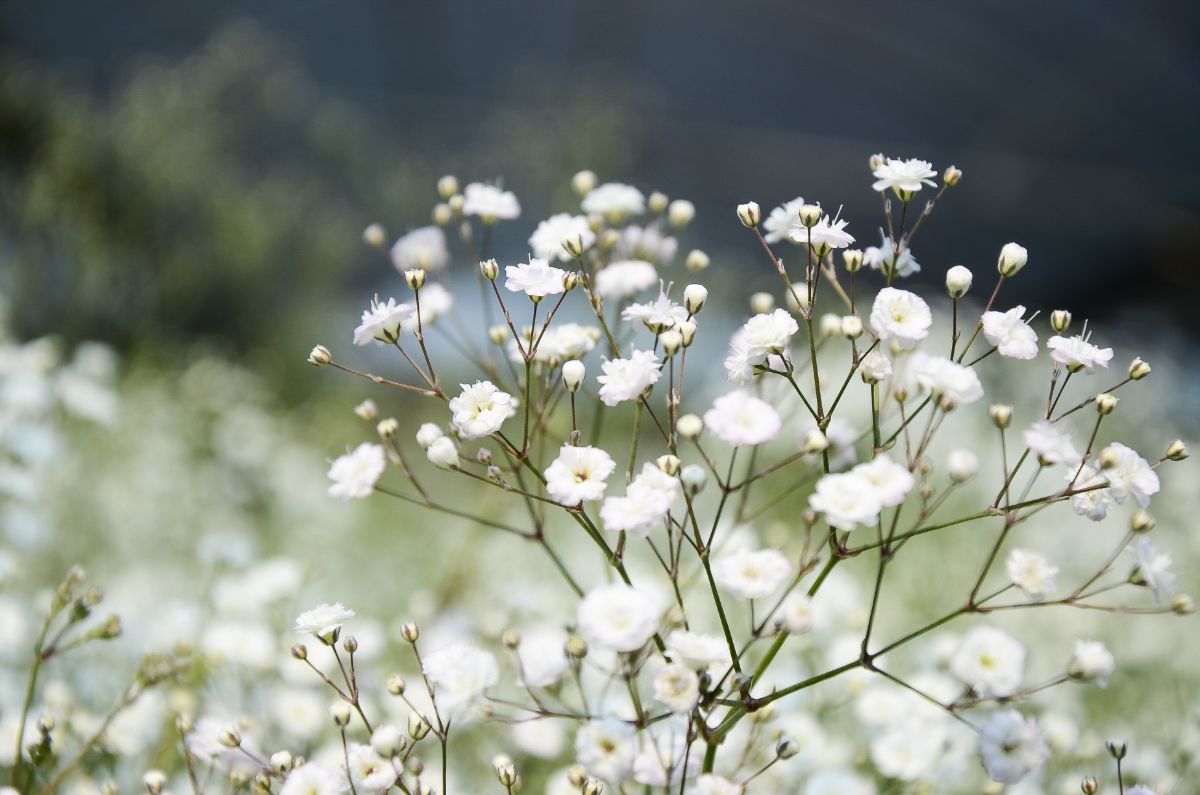
Broadly speaking, baby’s breath refers to the entire genus Gypsophila. There are around 150 species in this genus, some of them perennials, others annuals.
Best known among these species is Gypsophila paniculata, or “common baby’s breath.” Sometimes it is also called “panicled baby’s breath,” or just “baby’s breath.” This type of baby’s breath is a perennial.
Another well known type of baby’s breath is G. elegans, which also goes by the names “maiden’s breath,” “showy baby’s breath,” or again just “baby’s breath.”
Gypsophila paniculata is a perennial, whereas Gypsophila elegans is an annual.
Either species can be grown for cut flowers or for ornamenting your garden. You can also grow other types of baby’s breath as well.
That said, we will be focusing mostly on Gypsophila paniculata in this guide.
Baby’s Breath Basics
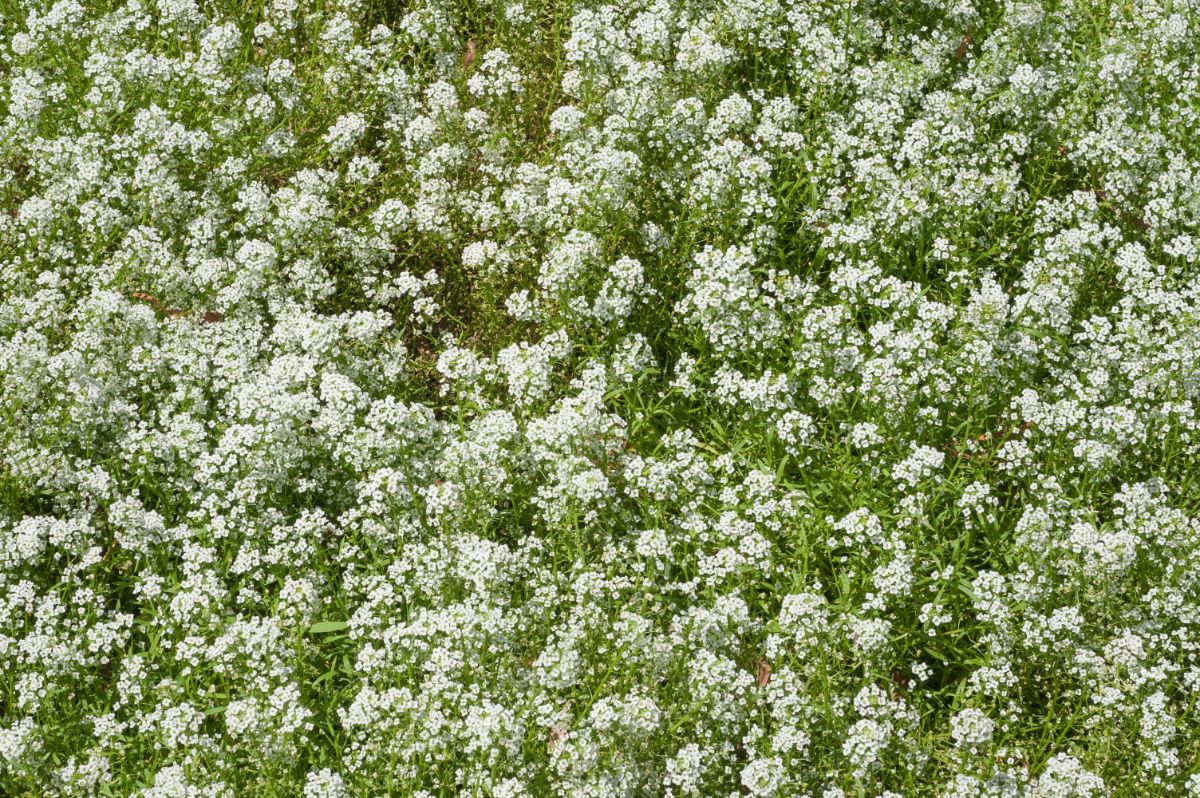
Zones: 3-9
Blooming season: Summer
Expected height: Up to 3 feet
Soil: Alkaline, well-drained
Sun: Full
Where Do Baby’s Breath Flowers Grow?
Paniculata is native to the western and central parts of Asia as well as the central and Eastern parts of Europe. Since then, it has been cultivated in locations throughout the world. Baby’s breath can flourish in a wide range of growing zones, so it can do well in many areas.
Why Grow Baby’s Breath?
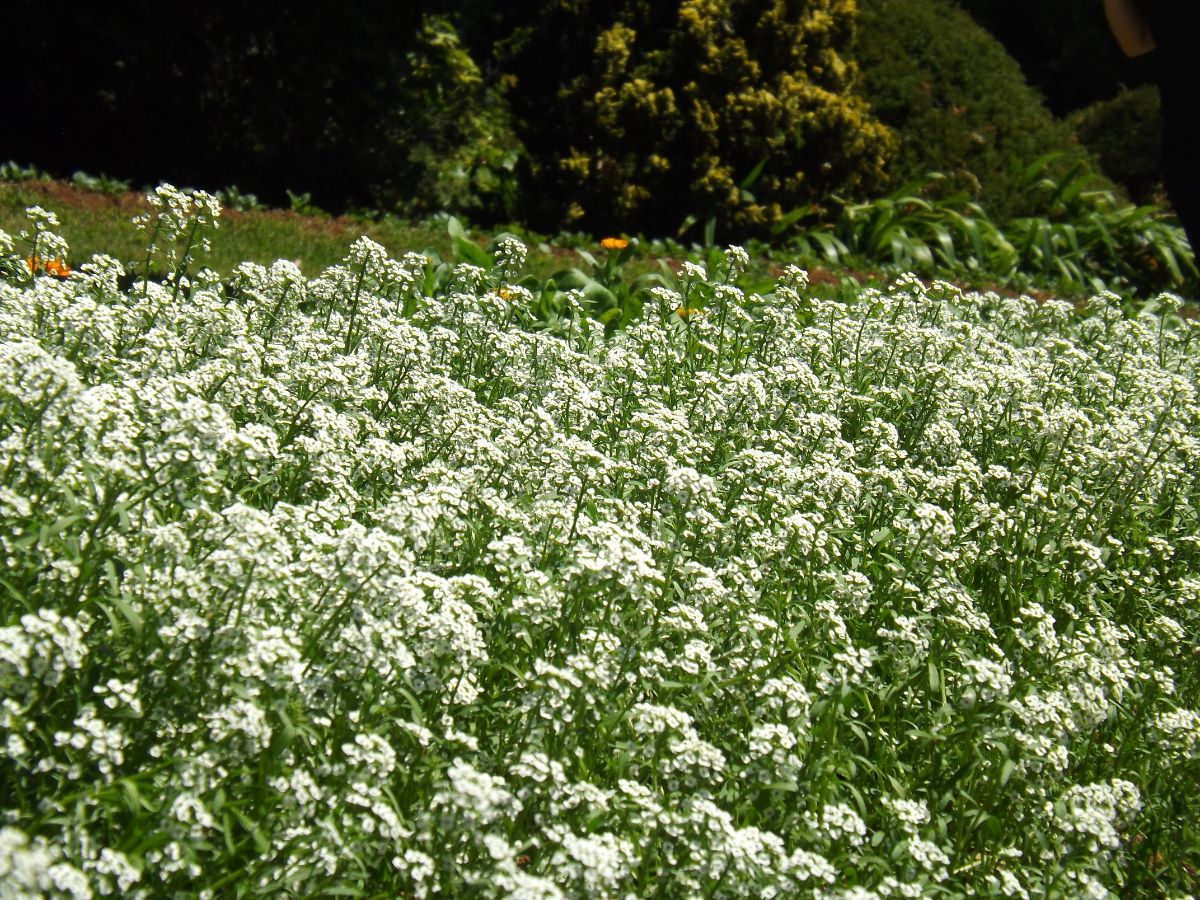
There are so many great reasons to grow baby’s breath. Some of these include:
- Baby’s breath is deer-resistant. While there is no such thing as a plant that is 100% deer-proof, it is unlikely that deer in your area will find your baby’s breath plants all that appetizing.
- This plant can weather droughts. Few flowers can compete with baby’s breath when it comes to surviving dry periods. In fact, baby’s breath loves dryness!
- This plant can handle salt. If you have salty soil, you will be pleased to learn that this airy plant can tolerate these conditions well.
- Have poor soil conditions? Baby’s breath should still be able to thrive, especially with a little compost.
- Baby’s breath is a low-maintenance plant. This is one of the main reasons this popular flower makes a good choice for beginners. So long as it is getting plenty of light and you take care of its pruning requirements, the perennial variety pretty much takes care of itself. It needs next to no attention during the winter, and very little in the way of water or fertilizer during its growing season.
- You can fill in empty spots in your garden. Tired of spring perennials dying back only to leave barren patches, or perhaps unsightly dying stems and stalks? Because baby’s breath provides thick coverage and blossoms during summer, it can cover up those eyesores.
- Baby’s breath are a must-have for cut flowers. If one of the reasons you have a garden is so you can make your own floral arrangements, baby’s breath plants are indispensable. You will be able to achieve the classic looks you want, especially in conjunction with roses.
- There is a long bloom period. Baby’s breath is not an ephemeral plant that produces a fleeting round of blooms and then goes dormant for the year. It can offer you beautiful white blooms for weeks during the summer.
Baby’s Breath Landscaping Ideas
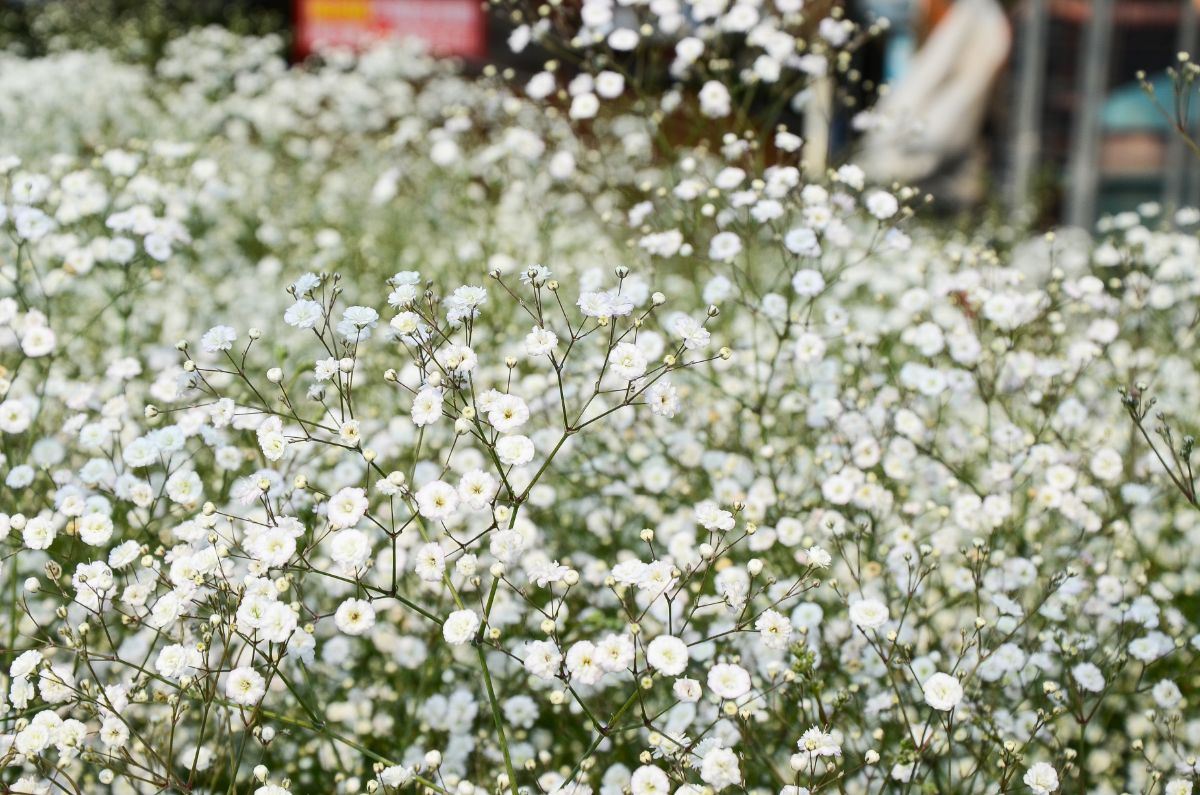
Looking for ideas for how you can landscape with baby’s breath? Here are a few possibilities worth thinking about:
- Cottage garden: When planting a cottage garden, the goal is to create a look that is voluminous and abundant. That means that you want to fill in large spaces, and baby’s breath’s white blossoms are ideal for that purpose.
- Borders: By planting baby’s breath plants close together, you can create a border in your garden.
- Fill in after other plants wilt: NC State Extension says, “Its fine billowy texture masks the dying stems of spent spring bulbs or early summer bloomers like poppies especially well.”
- Rock garden: Baby’s breath can flourish in rock gardens, providing a soft contrast to the hard surfaces of the rocks.
- Sandy soil: Fill out sandy spots in your garden where other plants are not able to grow.
Recommended Baby’s Breath Varieties
Usually we have a pretty big list of cultivars to recommend for most perennials, but that is not the case with baby’s breath.
Why? As we have mentioned, we are focusing on the perennial Gypsophila paniculata. As this article explains, “Classical hybridization is seriously hampered by the sterility of G. paniculata (Wang et al., 2013). As a consequence, very few variations exist among commercial cultivars used as fresh and dried cut flowers for fillers in flower arrangements (Zvi et al., 2008). Therefore, there is massive demand in the floriculture market for new varieties with novel characteristics.”
Alas, it seems we are still waiting for those new varieties. If you plant perennial baby’s breath, you will get the classic cloud of white flowers you have come to know and love in floral arrangements.
Where to Buy Baby’s Breath
Now you know how to grow baby’s breath! While this plant is best known for its role in flower arrangements, it can also be a beautiful addition to your outdoor spaces. Click the link below to shop baby’s breath seeds and starter plants online now.
When Do Baby’s Breath Flowers Bloom?
Your baby’s breath plant will come into blossom with a flush of flowers in summer. If you deadhead and trim, you may get another batch of blooms later on in the summer. Sometimes, the airy blooms may even last into early fall.
How Long Do Baby’s Breath Flowers Bloom?
The airy blossoms of baby’s breath plants can last for weeks.
When to Plant Baby’s Breath
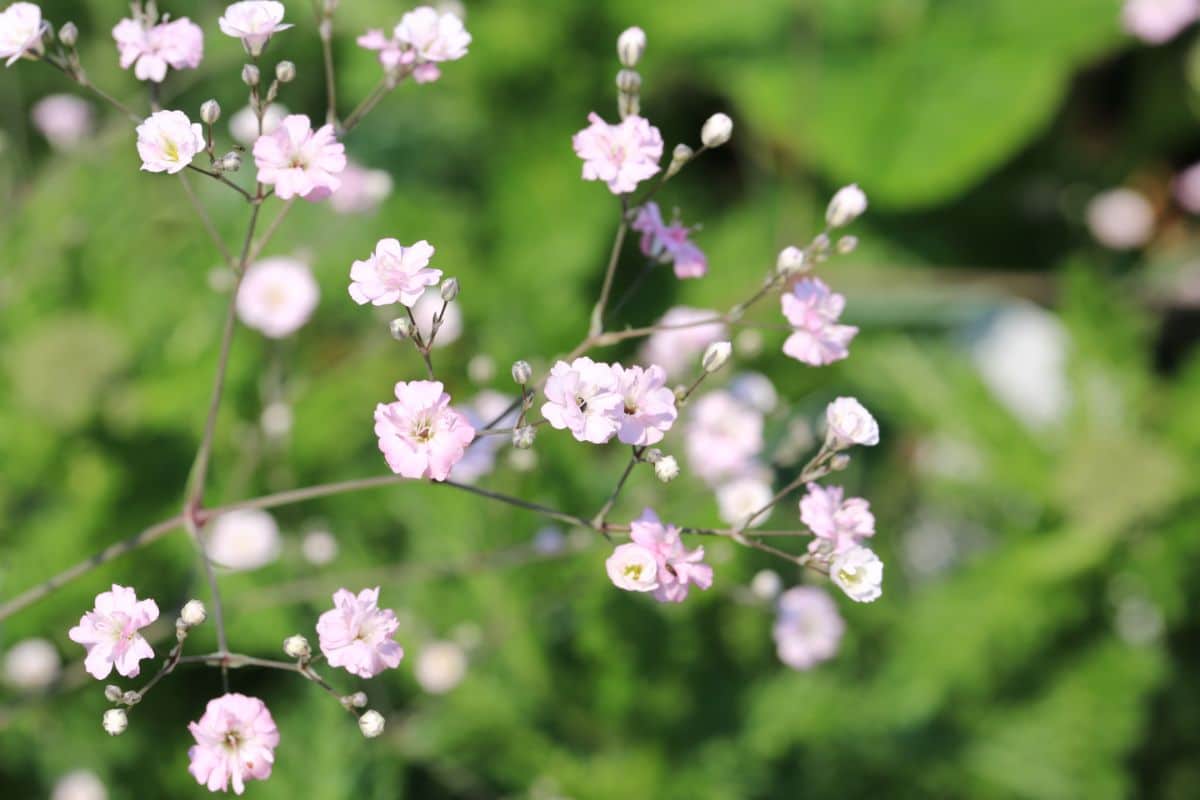
What is the right time to plant baby’s breath? Spring is ideal, but you can also do it in early summer. So long as the danger of frost is over, you are good to go.
Ideal Growing Conditions for Baby’s Breath
Now you know when you can expect beautiful blossoms on your baby’s breath plants. But what are the ideal sun, soil and water conditions? Let’s go over the requirements for growing baby’s breath now.
How Much Sun Do Baby’s Breath Flowers Need?
To grow baby’s breath successfully, you need at least four hours of direct sunlight. You will have the best results if you grow it in full sun. But if a sunny spot is unavailable, you can plant it in partial shade and still get beautiful flowers as well.
What Type of Soil is Right for Baby’s Breath?
This plant can adapt to diverse types of soil. Dry soil is best; in fact, baby’s breath loves sandy soil.
But if your soil is really dense like clay, you might need to modify it and/or put ordinary garden soil or sandy soil in pots, and use those to house your baby’s breath plants.
How should you modify clay soil? Just mixing in some organic compost usually does the trick.
The danger if you do not do this is that your plants may get too damp during winter, resulting in rot.
Also, alkaline soil is ideal, so consider adding garden lime to your soil before planting if it is on the acidic side.
How Much Water Do Baby’s Breath Need?

Baby’s breath requires less water than a lot of other plants in your garden. In fact, it is easy to over-water it if you are not careful.
When you first plant it, you will want to give it enough water to keep the soil moist. But after that, it does well in dry conditions. In fact, so long as you are getting regular precipitation, its watering needs should pretty much take care of themselves. But if it does not rain for a long time, you might need to water it.
How to Plant Baby’s Breath
Now, let’s talk about how to plant baby’s breath. You can purchase a starter plant from a garden center, or you can try growing it from seed. For the ground and container planting steps below, we will assume you are starting with a nursery plant.
Container Planting
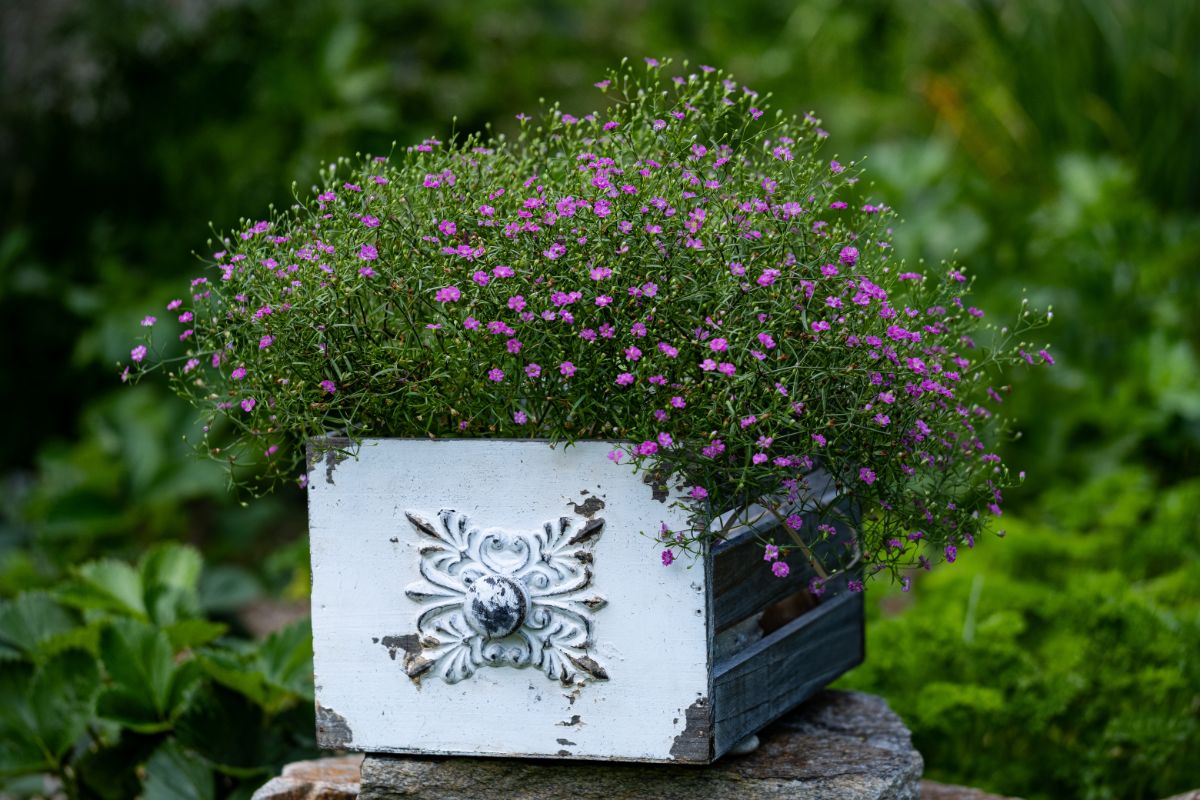
Here are the steps to planting these container-friendly perennials in pots:
- Start with an appropriate pot that has holes in the bottom for drainage.
- Fill your container with light soil mixture that drains well.
- Amend the soil using sand to provide a more suitable consistency and dryness.
- Make a hole for your plant and insert it carefully, taking care with the roots. Backfill the soil.
- Water the soil.
- Take your baby’s breath container plants to a sunny location.
- Water often enough that the soil stays moist while the plants are establishing. After that, you can water much less.
Ground Planting
Now let’s talk about how you can plant baby’s breath right in your garden beds.
- Choose a spot with plenty of sunshine for your baby’s breath plants. Take care to avoid clay soil and soggy spots in your garden.
- Amend your soil as necessary to make it sandier and/or or to improve its overall quality and richness.
- Dig a hole and insert your starter plant. Mind the roots since they are easy to damage. Backfill the soil.
- Water this perennial plant after you are done, and continue keeping the soil moist during the establishing phase.
Starting Baby’s Breath from Seed
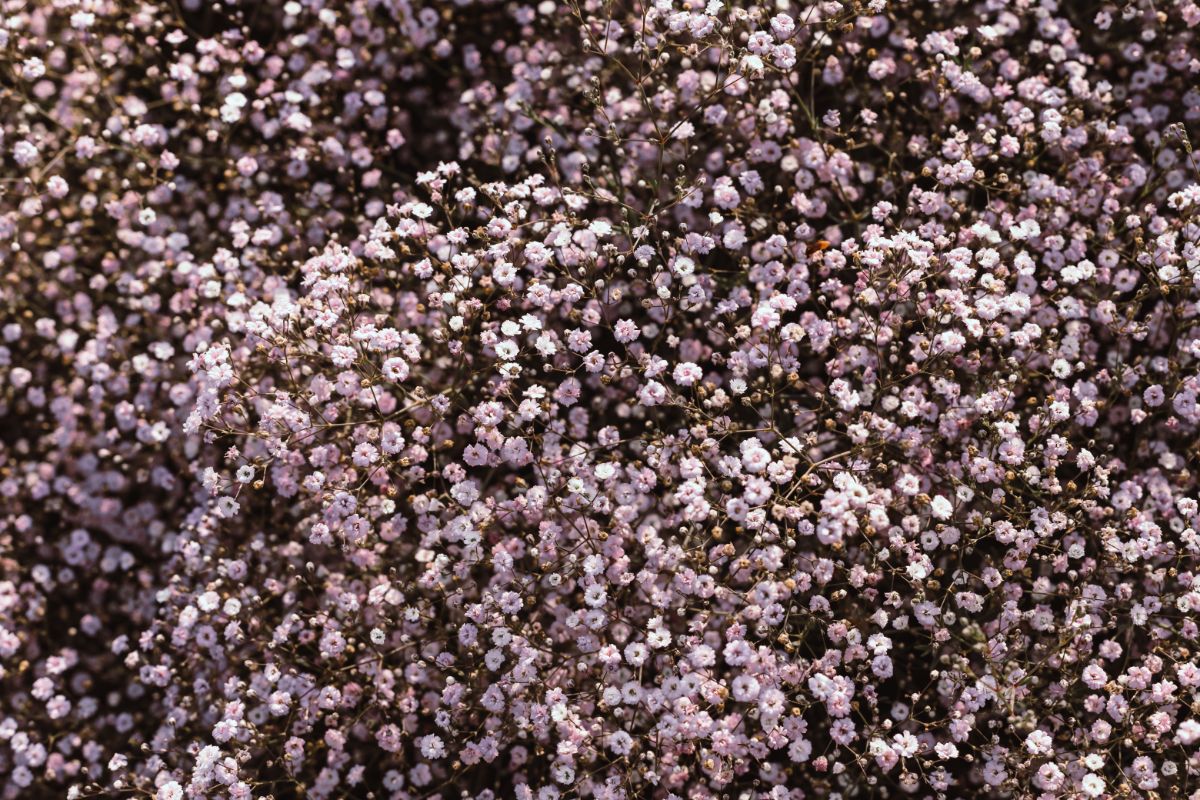
Here is how to start baby’s breath from seed:
- Get a seed starting tray.
- Put growing medium inside.
- Sprinkle the baby’s breath seeds on top of the growing medium.
- Add a very small amount of soil to the top. The seeds need to be able to get light to germinate.
- Use a spray bottle to gently mist the growing medium.
- You need to retain the moisture in the growing medium, so you are going to want to put some plastic wrap or a lid on top to help hold it in.
- Move the seed tray to where it can get light and the seeds can stay warm. 70 degrees Fahrenheit is a good temperature to aim for.
- Wait for your seeds to germinate, misting the top of the growing medium as needed to prevent it from drying out.
- Once the seeds have sprouted, transfer them to your containers or garden beds. Make sure to harden them.
How to Care for Baby’s Breath
After you plant baby’s breath, how do you take care of it? Let’s go over what you need to know about fertilizing, mulching, pruning and more for this low-maintenance perennial.
How to Fertilize Baby’s Breath
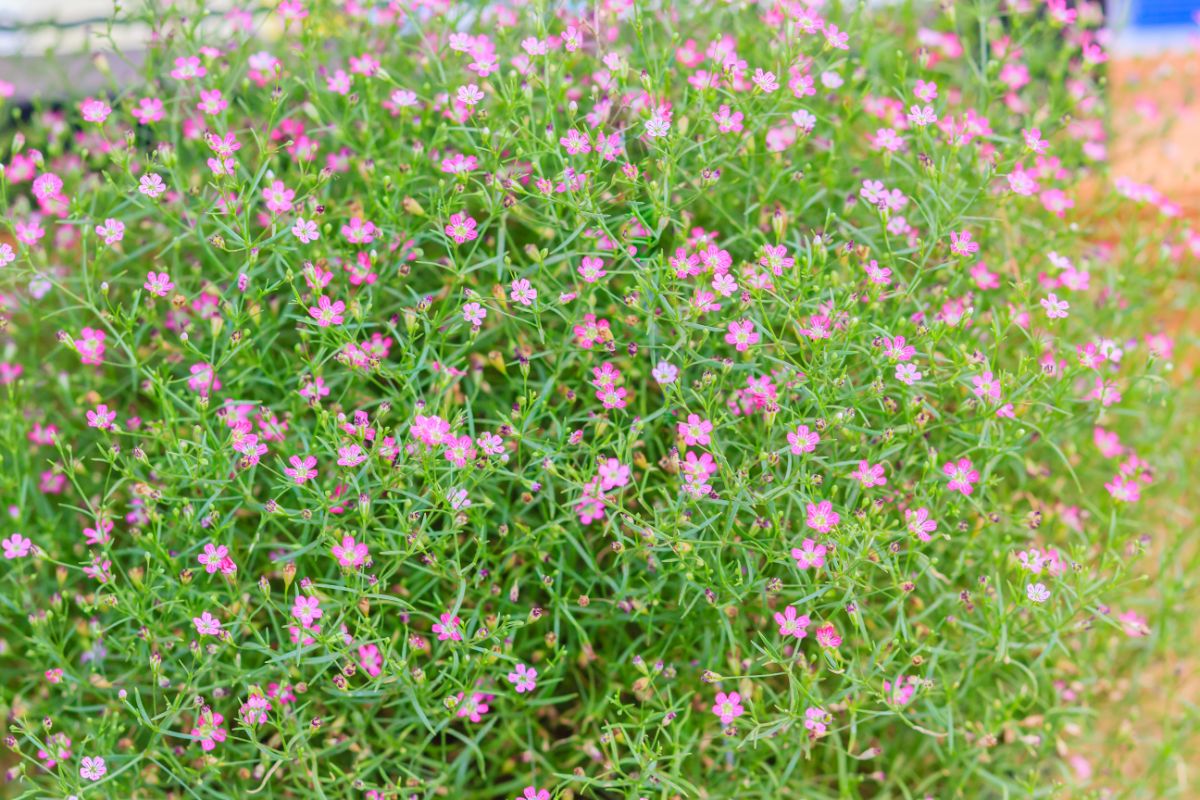
Some people fertilize baby’s breath periodically during the summer, or just once during spring or the start of summer. But depending on your soil quality, this might not be necessary. You definitely should not fertilize this plant come winter.
How to Mulch Baby’s Breath
Mulching around your baby’s breath may be useful for winter, but there are a couple of considerations you need to weigh against each other.
The benefit of mulch is that it will help keep the soil around your baby’s breath roots warmer during the winter.
The potential drawback is that mulch tends to lock moisture into soil. For many plants, that is beneficial. But with baby’s breath, that can be a different story. Again, this plant does not like its roots to stay too wet for too long. If they do, rot tends to follow.
So, if your area receives heavy precipitation during winter, mulching might not be worth it. On the other hand, if it is cold and dry, it might be suitable.
How to Stake Baby’s Breath
Not surprisingly, baby’s breath plants can benefit from staking. Even though the flowers are small and lightweight, the slender stems themselves are pretty delicate.
The best time to stake baby’s breath is during the spring. Do not wait for the plant to grow before staking—instead, when you see fresh growth first starting to appear, set up a grid.
The wiry stems will grow better with the stakes already in place. Moreover, after a time, the plant will conceal the stakes, and you will not have to look at them.
Because baby’s breath is somewhat fragile, you should avoid planting it where it will be exposed directly to strong gusts of wind or precipitation. Keep it in a sheltered spot if possible, but ensure it is receiving ample direct sun.
How to Prune Baby’s Breath
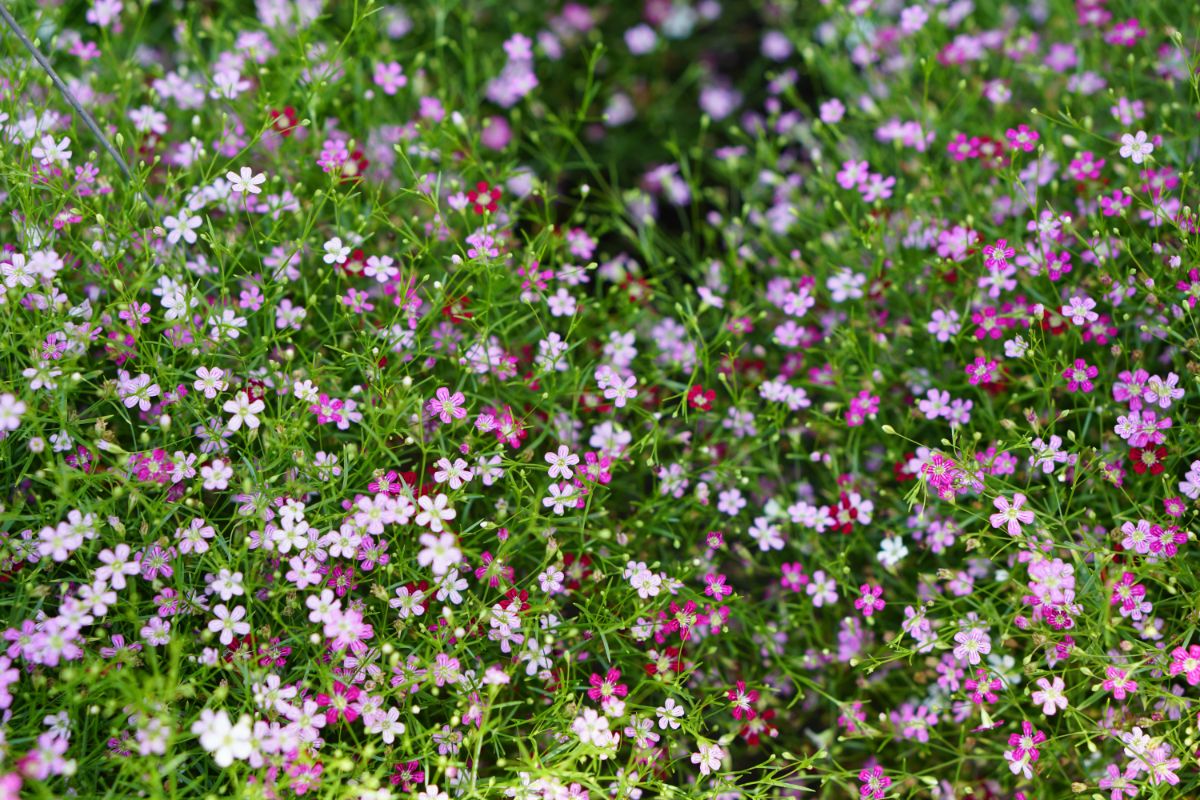
Pruning baby’s breath involves a combination of trimming and deadheading during the summer and cutting back the plant come autumn.
When to Cut Back Baby’s Breath
Baby’s breath should stop flowering either after summer is over or a little bit into fall (depending on how late the second bloom period ended up running).
Once it does, you can cut it back for winter. Leave just an inch over the soil, and be sure to discard all the dead stems and debris.
How to Deadhead Baby’s Breath
Did you know that baby’s breath can bloom again later in the season if you deadhead and trim after the flowers wilt?
You will notice flowers wilting first on the terminal sprays of the plants. After about half of them do, you can prune the terminal sprays. You can later prune the secondary sprays as well after the flowers turn brown.
There is another advantage to deadheading and pruning as well which goes beyond promoting a second bloom period each season.
Baby’s breath can self-seed, and it can do it dramatically. Montana State University Extension writes, “Each plant can produce nearly 14,000 seeds that are loosely held in capsules, and most drop off near the parent plant. Individual plants often break off at the base at maturity and tumble in the wind, spreading remaining seeds up to 1 km. Seeds display little dormancy, and the little documentation available suggests they may remain viable for about two years. Baby’s breath occasionally regenerates from pieces of the root crown.”
If you do not want baby’s breath spreading rampantly across your garden, it may be wise to stop it from going to seed with appropriate deadheading and pruning.
Are Baby’s Breath Vulnerable to Diseases or Pests?
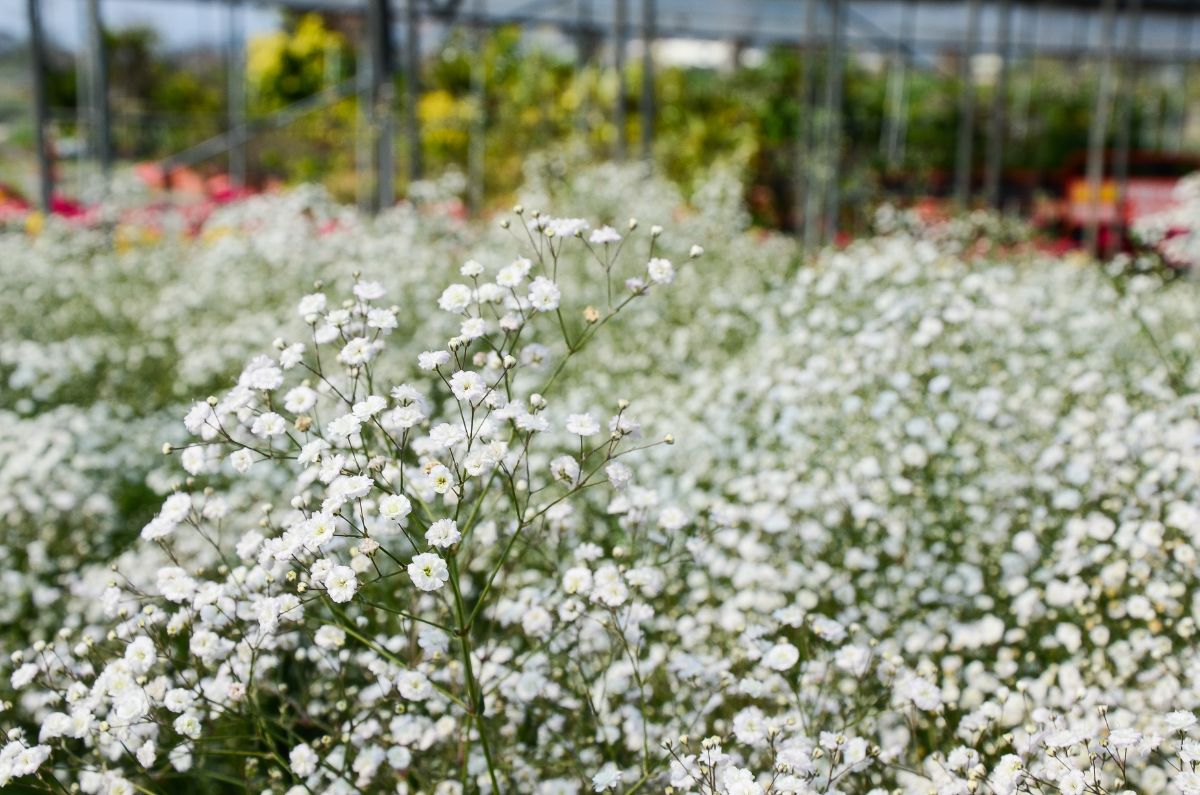
Some diseases that can affect baby’s breath include bacterial gall, flower blight, crown rot, stem rot and root rot. You can find a useful guide at this link that includes symptoms of these infections as well as their causes and what you can do to get them under control.
The best thing you can do for avoiding issues with rot is to make sure that baby’s breath is not exposed to too much moisture.
Moisture can be particularly problematic over the winter if you get a lot of precipitation and your soil does not drain adequately.
That is why you should not plant it in clay if at all possible. Sandy, well-draining soil will help prevent disease.
Pests that are fond of infesting baby’s breath plants include aphids, leafhoppers, Japanese beetles, slugs and snails. Thankfully, problems involving these pests are not all that common. Most baby’s breath plants can live un-harassed in your garden.
An exception might be if you happen to live in a location with a lot of gophers. These animals can disturb the roots of baby’s breath plants.
Usually, you can provide sufficient protection simply by applying some wire mesh. Raised garden beds can also help.
How to Transplant Baby’s Breath
Baby’s breath does not do well when uprooted and replanted. So, if you can possibly avoid transplanting it, you should. Plant it where you want it for the long term.
Recommended Companion Plants for Baby’s Breath
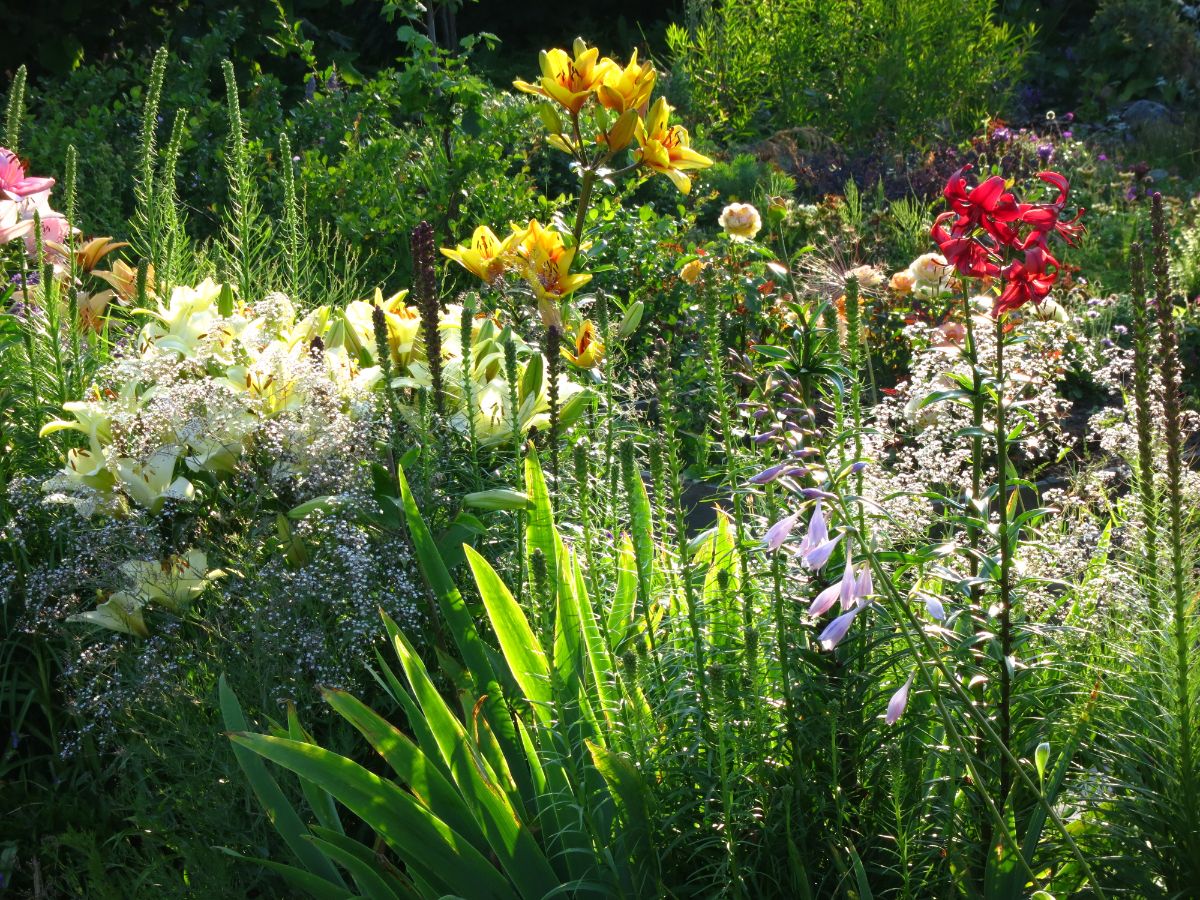
One more question you may have about incorporating baby’s breath into your perennial gardens is what companion plants it does well with. Here are a few plants to consider putting next to this perennial species:
- Roses: Baby’s breath in gardens can look lovely next to roses. Indeed, this is the classic pairing you are probably used to seeing in flower arrangements. Rose buds in bloom in summer and fall with baby’s breath beside them bring a touch of romance to your outdoor spaces.
- Lavender: Another popular plant type for companion planting alongside baby’s breath is lavender. The appeal with this flower is its soft appearance. Indeed, it helps to emphasize that same quality in the baby’s breath itself.
- Tulips: Tulips are short-blooming perennials that grace your yard in spring. After they die back, baby’s breath can help to fill out the gap.
- Irises: As with tulips, the bloom time for irises is spring. They, too, can leave a gap behind them. By filling it in with baby’s breath over the summer, you can continue to enjoy a full look to your garden.
- Poppies: The orange, red and yellow blossoms of poppies are a joy to behold for the very brief time they open during May and June. After the close, baby’s breath can fill in.
Frequently Asked Questions About Growing Baby’s Breath
If something is eating your baby’s breath, it is probably an insect, slug or snail. It is unlikely to be a deer.
Unfortunately, some types of baby’s breath are considered invasive in some locations. For example, if you live close to the upper Great Lakes near the dunes, you may want to avoid growing it. In California, Washington, and Manitoba, it is listed as a noxious weed. You can learn more here. Local laws may forbid or permit planting baby’s breath, so check yours before proceeding.
ASPCA classifies baby’s breath as non-toxic to dogs, cats and horses. Nevertheless, the organization says, “Mild GI upset such as vomiting, and diarrhea may be seen if ingested.”
So, you do not need to worry about your pets getting into baby’s breath; they will be okay if they eat it. But you can expect them to be a little under the weather until it is out of their systems.
That depends on the type of baby’s breath we are talking about. Gypsophila paniculata, the most iconic type of baby’s breath, is a perennial. But there are annual baby’s breath plants as well.
If you cut baby’s breath for a floral arrangement or just to put by itself in a vase indoors, you might wonder how to keep the flowers alive as long as possible. Do baby’s breath stems need water or not?
That is really up to you. If you want, yes, you can fill a vase with 3-4 inches of water, and insert the stems.
But if you want to use the baby’s breath in arrangements without water, you can prep them by putting them in a refrigerated environment with humidity of up to 94%. You then can keep them without water for 2-3 days since they will have absorbed so much.
Any flowers can potentially look nice with baby’s breath, but the most traditional options are roses, tulips and lilies.
Yes, the sap from this plant can irritate your skin. While it should not be a major issue, you can prevent it by putting on gloves before you tend to your baby’s breath plants or create arrangements. If you do have direct contact with baby’s breath, immediately washing with soap and water should help.

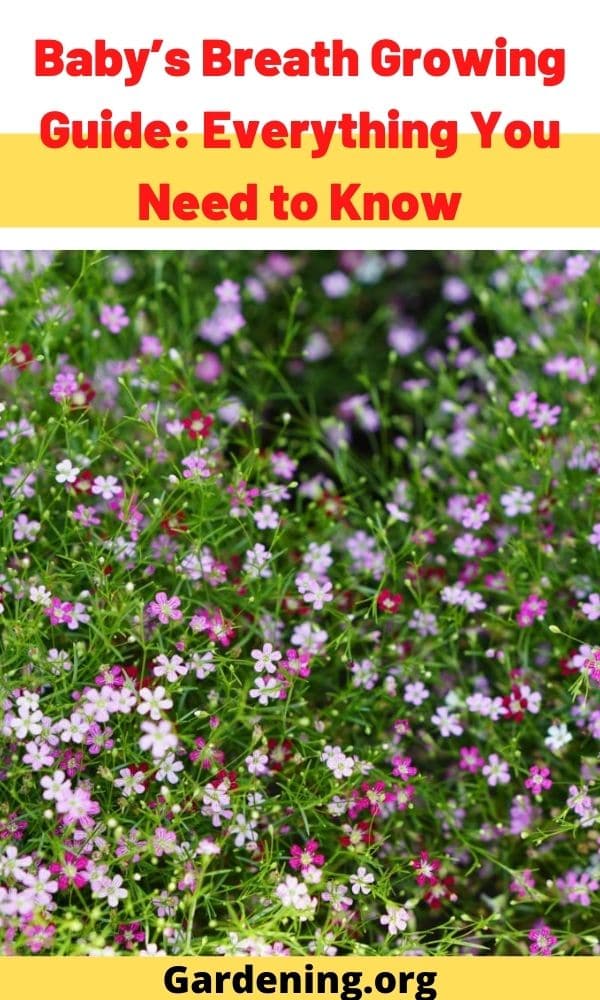

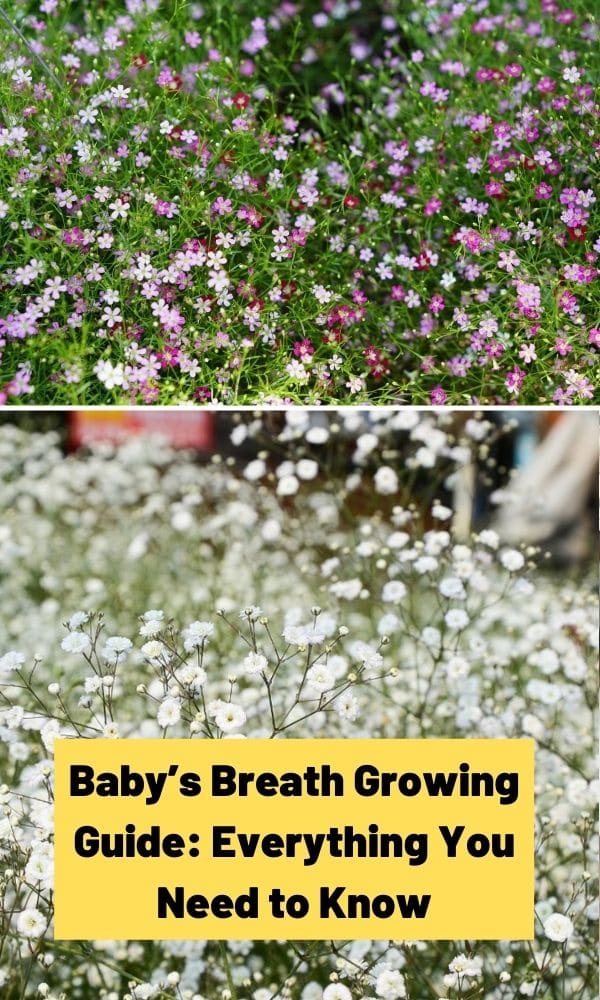
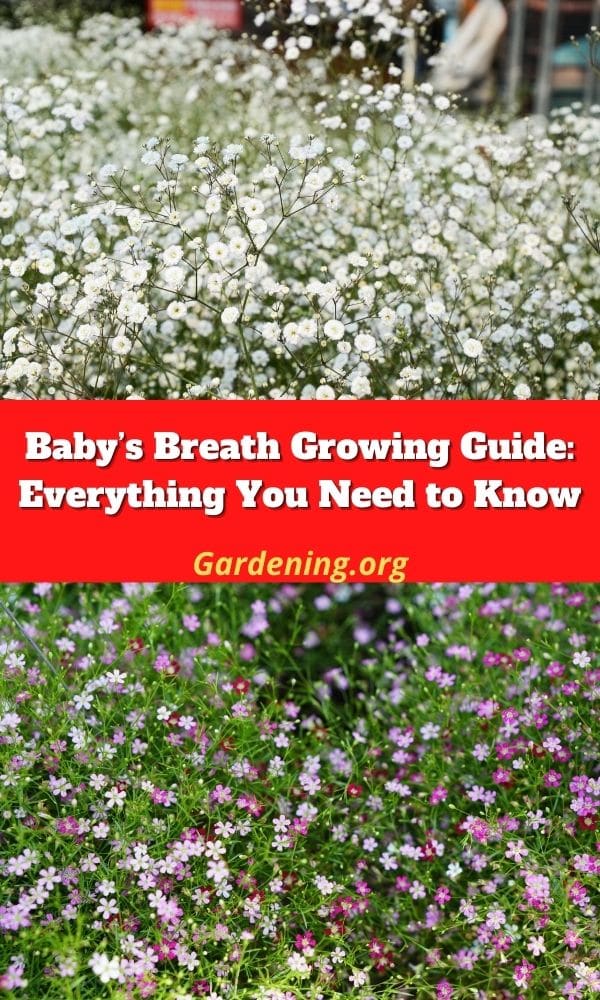
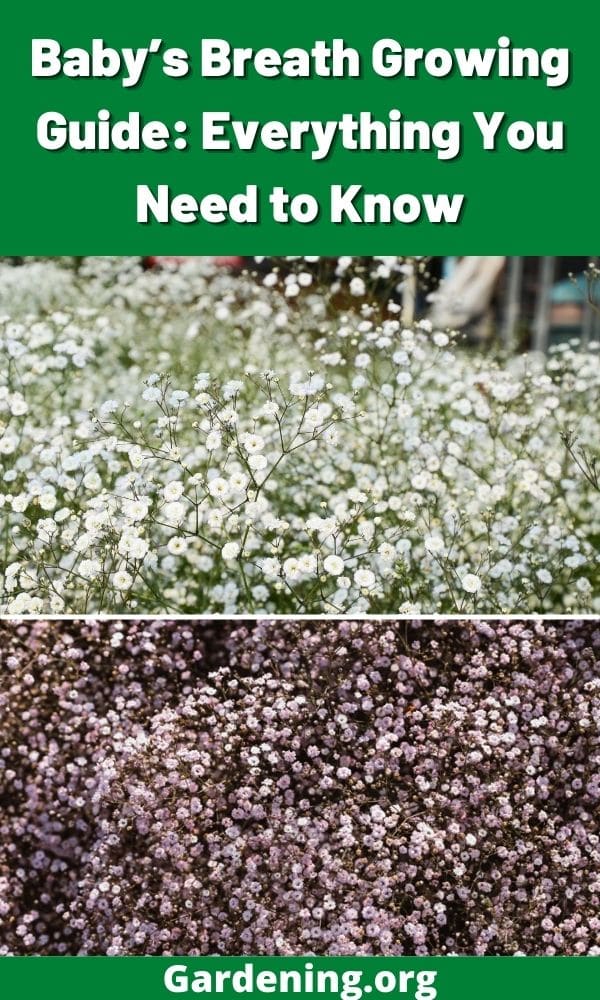






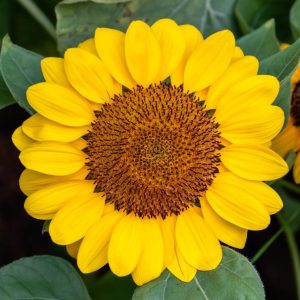
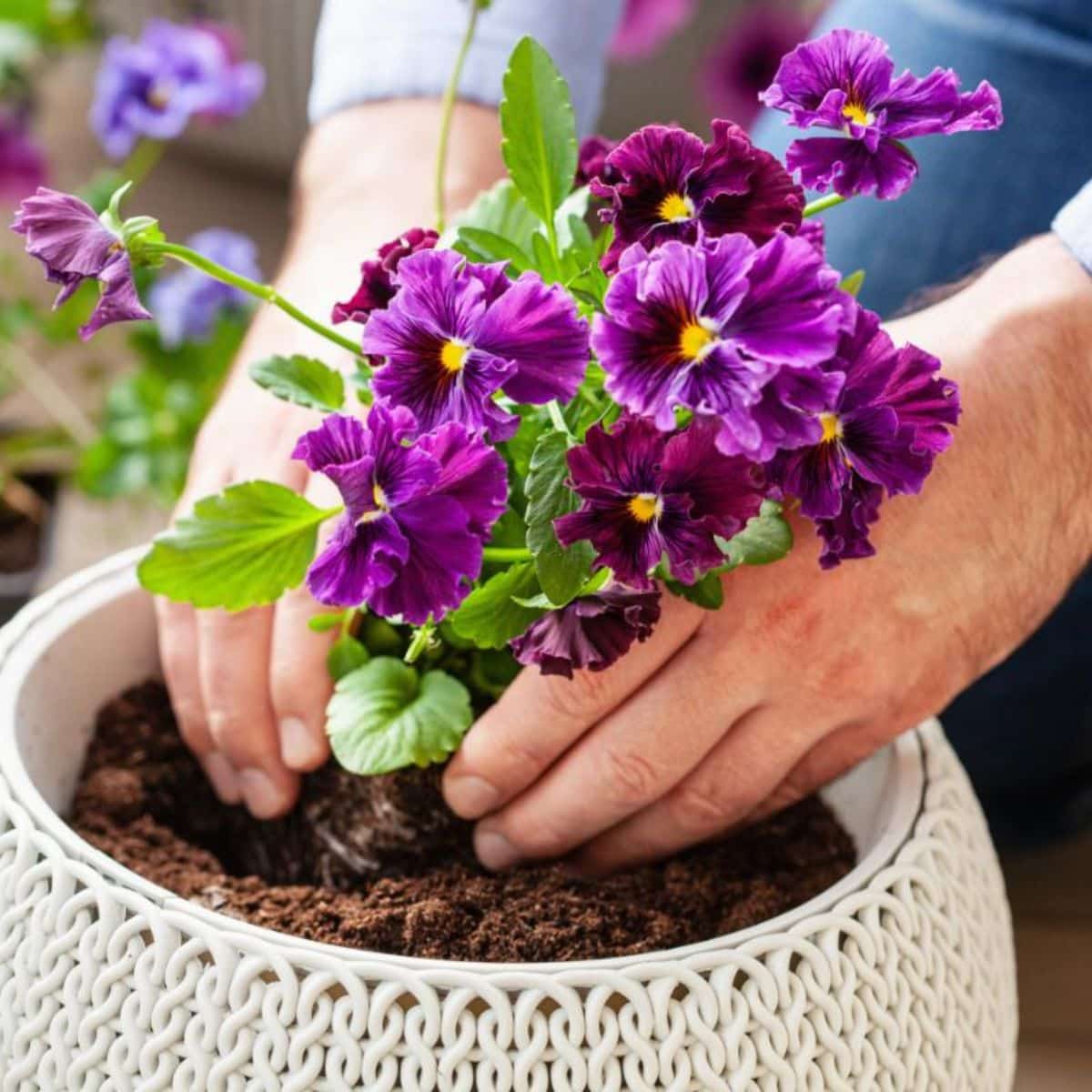
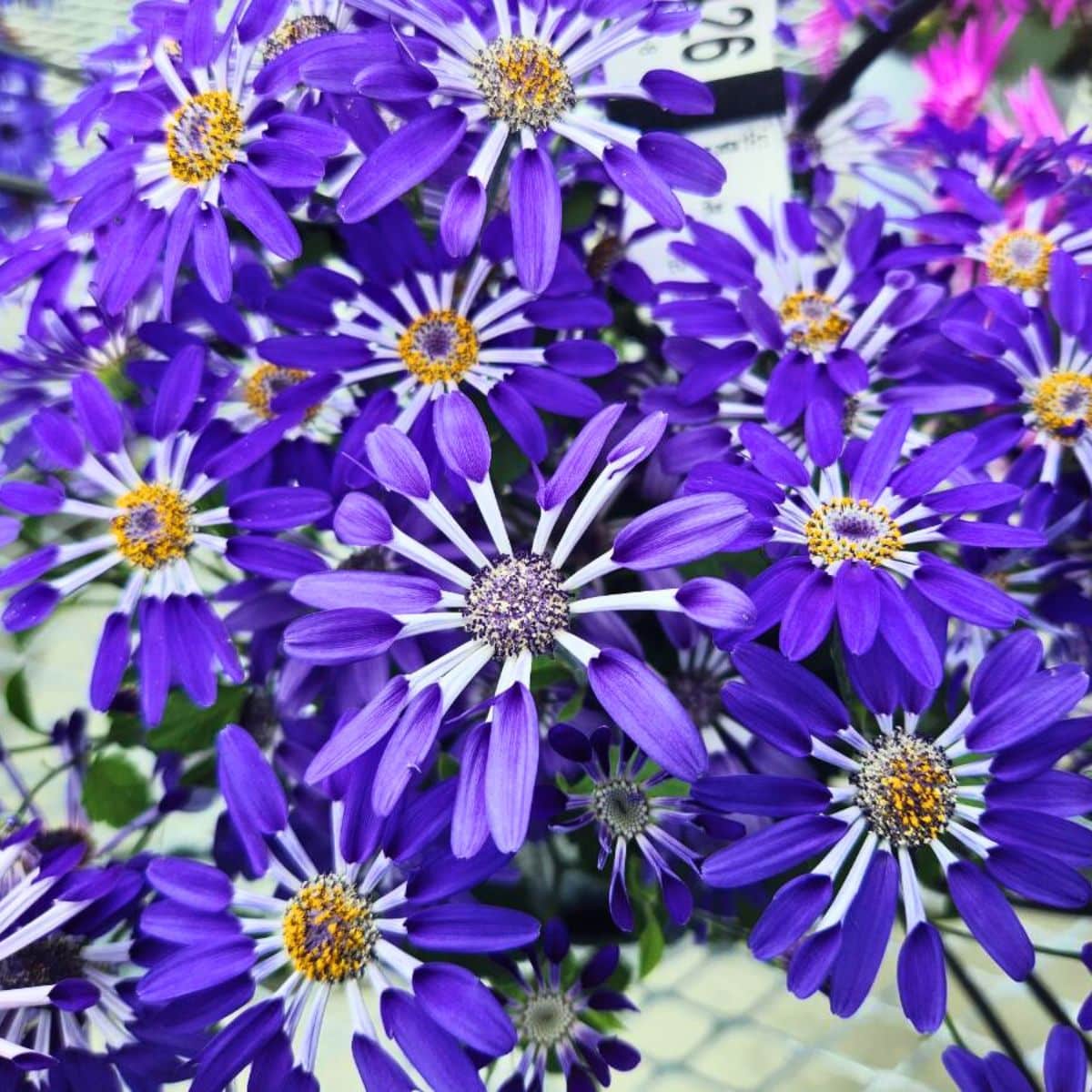
Mary Coakley
Love getting your emails.so much.info
In one email I.had not scrollef.to the end and found your.Podcast better.and better Regards.MaryCoakley